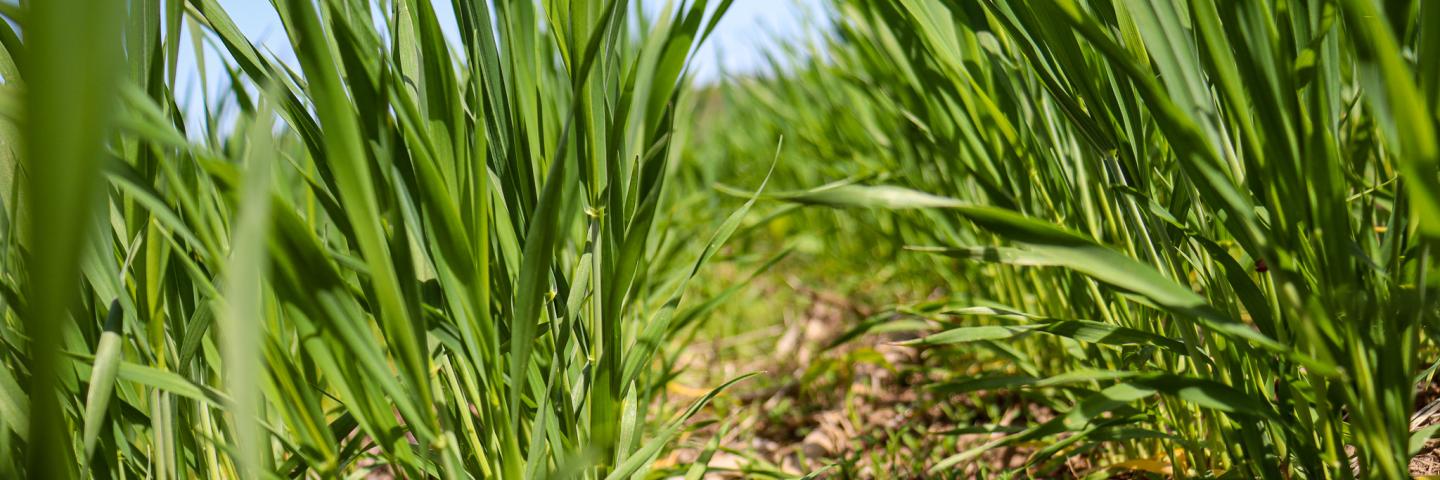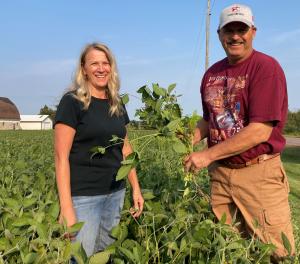Healthy Soil for the Farm’s Future

Laurie Fortuna, 4th generation landowner, and her husband Larry make soil health their main mission on their 500-acre dairy farm.
Background
Nestled in the foot of the picturesque “Blue Hills” of western Rusk County, Wisconsin, sprawls the 500-acre farm of Laurie and Larry Fortuna. They took over Laurie’s family farm in 1985, making her the fourth generation of her family to own the land since 1902. In an area that is known for producing high quality hardwood timber, Larry and Laurie milk 180 Holstein and Jersey cross cattle. Despite challenges effecting their operation, including low soil organic matter composition and soil compaction, they enjoy the life of Wisconsin dairy farmers.
Highlights
Laurie and Larry have always had a keen interest in conservation and what that means for their farm. Several cold-water trout streams flow through the area, so as the dairy operation grew, they focused on safe handling of manure and other potential waste runoff from the farm. In the 1990s, they applied for the U.S. Department of Agriculture Natural Resources Conservation Service (NRCS) Environmental Quality Incentives Program (EQIP) and were able to make several updates to the manure transfer and storage systems on the farm to allow land application while minimizing runoff.

More recently, Larry has engaged NRCS to discuss soil health on his cropland acres. “Over the years, I have fought with compaction and low soil organic matter content, and I want to do something about it,” said Larry. The Fortuna’s follow a typical dairy crop planting rotation for the state of Wisconsin: a few years of corn silage followed by three to four years of alfalfa, and they maintain some acres in a corn - soybean rotation as well. They applied for the NRCS Conservation Stewardship Program (CSP), which offers financial assistance to participating landowners based on the level and amount of conservation practices being adopted on the farm. Nick Besasie, NRCS District Conservationist in Rusk County, helped develop a plan with Larry after discussing the options to increase soil health. “The best option for cover crops in this part of the state are after the corn silage is harvested and we also have a small window to drill in winter rye after soybeans come off,” said Nick.
The first step of their soil health plan was to incorporate cover crops into the rotation wherever possible. Cover crops keep a living root in the soil for more of the growing season, scavenge nutrients that overwise would be lost, and will help break up soil compaction. Larry also opted to increase the use of no-till practices, which can help to alleviate compaction issues and increase soil carbon. “CSP has been great for our farm. The program really provided the incentives we needed to start incorporating more soil health practices into our cropping system,” said Laurie.
Future Plans
In addition to the soil health practices, Larry wants to provide habitat for the wildlife on the farm and has planted hundreds of shrubs on the property with the help of CSP. Going forward, they want to add more diversity to their crop rotation in the form of small grains, as well as grow their own cover crop seed in the next few seasons.
Additional Information
Conservation Stewardship Program - Wisconsin
The Conservation Stewardship Program (CSP) can help you identify natural resource problems in your operation and provide technical and financial assistance to solve those problems or attain higher stewardship levels in an environmentally beneficial and cost-effective manner.
Learn More
